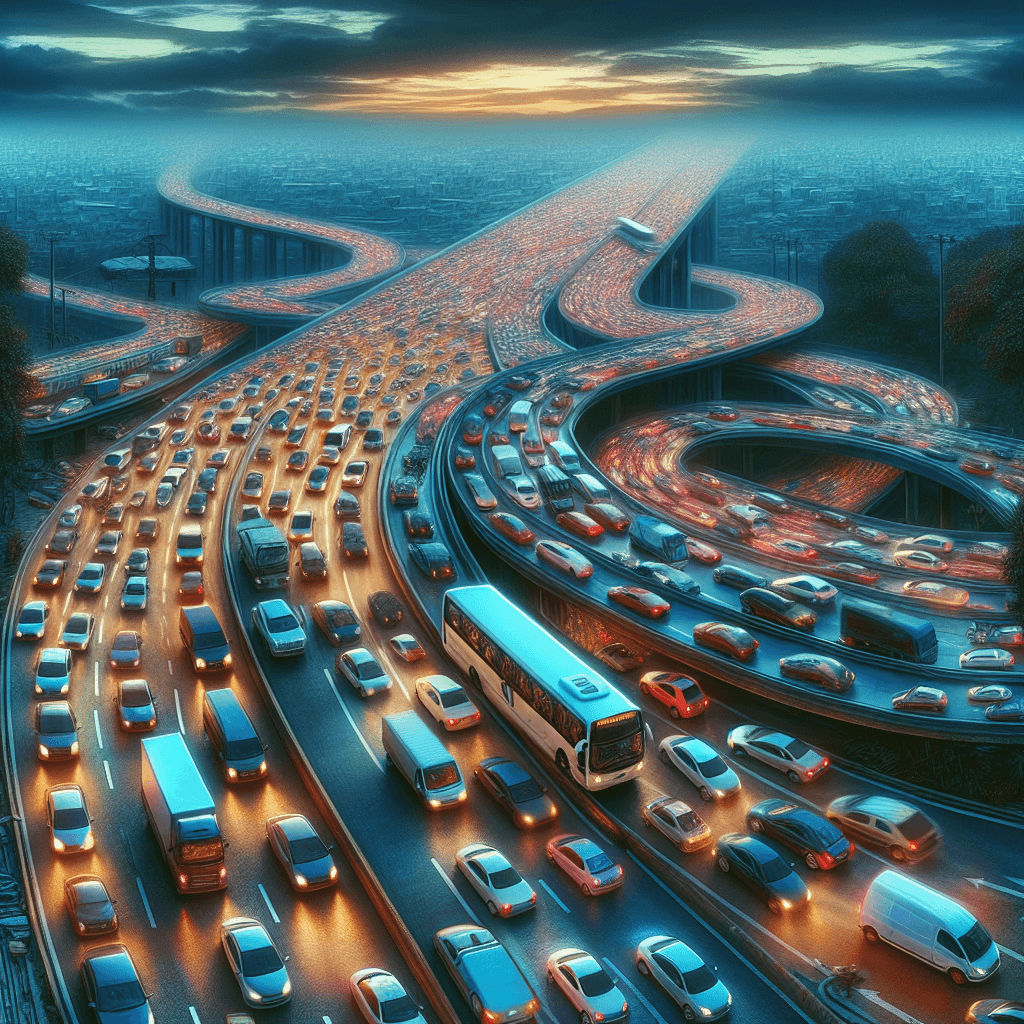The Unseen Culprit: Why Does Traffic Often Flow in Phantom Jams With No Clear Cause
Ever been stuck in a traffic jam for no apparent reason? This frustrating phenomenon is known as a 'phantom jam,' a mysterious slowdown that seems to appear out of nowhere and disappear just as quickly.


Too Long; Didn't Read
Traffic jams that form without an obvious cause like an accident or construction are called 'phantom jams.' They are mysterious slowdowns that seem to appear and disappear on their own.
The Unseen Culprit: Why Does Traffic Often Flow in Phantom Jams With No Clear Cause?
We’ve all been there: cruising along the highway, only to find ourselves slowly grinding to a halt. You inch forward, expecting to see an accident, a stalled vehicle, or road construction. But then, as mysteriously as it began, the traffic clears, and you’re back up to speed, leaving you wondering, "What was all that about?" This frustrating phenomenon is known as a "phantom jam," a traffic slowdown with no apparent external cause. Understanding why these occur is crucial not just for our sanity, but for improving traffic flow. This post will delve into the science behind why traffic often flows in phantom jams with no clear cause.
What Exactly is a Phantom Jam?
A phantom jam, sometimes referred to as a "shockwave jam" or "jamiton," is a traffic congestion phenomenon that arises spontaneously in moderately heavy but free-flowing traffic, without any obvious trigger like an accident, lane closure, or fixed bottleneck. The jam itself often moves backward, or upstream, against the flow of traffic, even as the individual cars within it are attempting to move forward. Imagine a wave moving through water – the wave has a direction, but the water molecules themselves are mostly moving up and down. In a phantom jam, the "wave" of congestion moves backward.
The Human Element: How Small Actions Create Big Problems
The primary reason why traffic often flows in phantom jams with no clear cause lies in collective human driving behavior and the principles of traffic flow dynamics.
The "Slinky" Effect: One Brake Tap Too Many
The most common trigger for a phantom jam is a single driver braking unnecessarily or too sharply.
- Initial Brake: Perhaps a driver gets too close to the car in front, or is momentarily distracted. They tap their brakes.
- Reaction Delay: The driver behind them sees the brake lights, reacts (after a slight delay, typically 0.5 to 2 seconds), and also brakes, often a little harder to be safe.
- Amplification: This pattern continues down the line of cars. Each subsequent driver tends to brake slightly harder and for longer than the one in front. This creates a ripple effect, much like compressing one end of a Slinky toy.
- The Wave: This compressed "wave" of stopped or slow-moving traffic travels backward through the line of vehicles. By the time the wave passes, the initial cause (the first unnecessary braking) is long gone.
Studies, including well-known experiments conducted by Japanese researchers using a circular track with a set number of cars, have visually demonstrated this. In these experiments, drivers were asked to maintain a constant speed. Inevitably, small variations in speed would amplify, leading to a full-blown phantom jam that circulated around the track.
Overreactions and Inconsistent Speeds
Human drivers are not perfect at maintaining consistent speeds and distances.
- Over-braking: Drivers often over-brake when they perceive a slowdown ahead, contributing to the amplification of the initial disturbance.
- Delayed Acceleration: When space opens up, there's a delay before drivers accelerate, and they may not accelerate smoothly or uniformly. This creates gaps that can, paradoxically, contribute to new slowdowns as following drivers react to the inconsistent speeds.
- Lane Changing: An ill-timed or aggressive lane change can force drivers in the new lane to brake suddenly, potentially initiating or worsening a phantom jam.
Traffic Density: The Tipping Point
Phantom jams are more likely to occur when traffic density reaches a certain critical point.
- Free Flow: At low traffic densities, there's plenty of space between vehicles. A driver braking will likely not affect anyone significantly.
- Critical Density: As the number of vehicles per mile increases, the space between them shrinks. At this stage, the system is less stable. A small perturbation, like a single car braking, can easily trigger a chain reaction because drivers have less room and time to adjust smoothly.
- Congested Flow: Beyond critical density, the road is already jammed, and phantom jams merge into general congestion.
According to traffic flow theory, once traffic density exceeds approximately 25 vehicles per mile per lane, the likelihood of these shockwaves forming increases dramatically.
Can We Prevent Phantom Jams?
While completely eliminating phantom jams caused by human behavior is challenging, their frequency and severity can be reduced.
- Driver Awareness and Behavior:
- Maintain a safe following distance: This provides more time to react smoothly.
- Avoid sudden braking: Anticipate traffic conditions ahead and decelerate gently.
- Smooth acceleration: Accelerate predictably when space opens up.
- Minimize unnecessary lane changes: Especially in dense traffic.
- Technological Solutions:
- Adaptive Cruise Control (ACC): Systems that automatically adjust a car's speed to maintain a set distance from the vehicle ahead can help dampen shockwaves.
- Cooperative Adaptive Cruise Control (CACC): The next generation, where vehicles communicate with each other, could lead to even smoother, more coordinated traffic flow.
- Variable Speed Limits: Some intelligent transportation systems use dynamic speed limits, advising drivers to slow down gradually before they reach a congested area, helping to smooth out flow and prevent stop-and-go waves.
Understanding why traffic often flows in phantom jams with no clear cause reveals that these frustrating events are not entirely random. They are emergent properties of how we, as a collective, interact on the roads, especially when traffic volumes are high. While the sight of brake lights ahead for no discernible reason can be infuriating, it’s a reminder of the delicate balance in traffic flow. By being more mindful of our own driving habits and embracing emerging automotive technologies, we can all play a part in reducing these "ghostly" gridlocks and making our commutes smoother.


